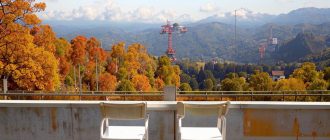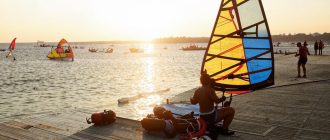As much as it may seem to some, skateboarding is not just a way for teenagers to spend time on the street, it’s a cultural phenomenon. In its rather long history, the subculture has experienced the ups and downs of interest in it, technological advances and innovations in skateboard design, and most importantly, it has made its way from a California beach to Olympic recognition. And if the first point is clear, and the third everyone has seen, the second seems to be just a fiction.
Here, perhaps, we will take a pause and pass the floor to the founder of the Minsk Museum of Skateboarding Gleb Benciovsky, who knows best of all what and how this sport has experienced since the 50s of the last century.
“My grandmother’s choice determined my fate.”

founder of the Minsk Museum of Skateboarding
Skateboarding was chosen for me by my grandmother. I wanted to ride a bicycle, and she bought me a skateboard because it was cheaper. That determined my future destiny. I got my first board over 30 years ago, but I still continue to skate.
In 2005 I opened my first skate shop and every day I saw how attitudes towards skateboards were changing. People would come in, buy boards, leave, do tricks, break their skateboards, come back, buy new ones and so on. In our time, things were completely different.
First of all, a board, although more favorable than a bike, was expensive. Second, skateboards were impossible to find. Thirdly, a person with a skateboard in Soviet times attracted the attention of absolutely different personalities, from government agencies to grandmothers.
It was not enough to get a board, you had to take responsibility for your “choice”. I had to defend it almost daily, not only on the street, but also at school. I had a lot of problems with skateboarding, but I overcame them all.

Skateboarding is about freedom, but it’s also a way to get around the system. The kind that exists in any society. Skateboarding gives you the right to make choices. If you make your own decisions about what you do and when, people around you may not always realize it.
It is that old-school spirit of Soviet and post-Soviet skateboarding that I wanted to pass on to the younger generation. So I put together a collection of old skateboards we used to ride.
“I collected 750 unique skateboards from different countries”.
The idea for the museum itself was born in 2004. The initial “stone” was one of my first boards. Then my friends from Belarus and Russia pulled up, followed by their friends. The exposition began to grow like a snowball. At the same time, digging in libraries and archives, I began to realize the scale of Soviet skateboarding, which amazed me a lot. Imagine, one sixth of the landmass, a huge country with a population of almost 250 million and spanning the territories of Europe and Asia – there was a lot of information.
That’s how the USSR Skate Museum was born – the first conceptual collection of boards, artifacts and documents dedicated to skateboarding in a huge country. But I realized that without the history of world skateboarding there would be no Soviet skateboarding history. Later I started to have things related to the world movement, and I decided to expand the exposition.
Skateboarding, like any part of street culture, changes every decade. A new generation arrives, evolutionary and revolutionary changes take place.
Now the museum consists of the history of the USSR, corners of European, Brazilian, Belarusian skateboarding, DIY-skateboarding (short for “Do it yourself” – made with your own hands – ed.) and the exposition “Skateboarding as Art”. Since the fall of 2018, the permanent exhibition has been located in Minsk, and now it features more than 750 exhibits. It is a voluminous collection that is unparalleled in conceptuality and filling with key artifacts.
“Each country influenced skateboarding in its own way”
In the mid 70’s skateboarding stepped across the ocean and into Europe, and then it trickled into the Soviet Union as well. I now have boards from England, France, Sweden, Spain, Bulgaria, Czechoslovakia and Poland. A large selection from Germany, both East and West. The skateboards are varied and unique because each country tried to influence the development of skateboarding in their own way. For example, if you look at West and East German boards released at the same time, it’s heaven and earth.

I have some interesting artifacts from Brazil, which can rightfully be considered the birthplace of skateboarding. The country, despite political and economic problems with the US, was able to create its own full-fledged industry from scratch. And if you dive into today’s sports realities, half of the pantheon, including the Olympic pantheon, are Brazilian riders.
Skaters from this country are very open people. I have their first boards from the 50s, 70s, 80s and noughties in my museum. After spending almost a month in São Paulo with exhibitions, I was surprised how much the city of 25 million people is saturated with skateboarding. Of course, they have few alternatives: soccer, skateboarding or crime. So the industry there is very interesting and powerful. I’m pleased that the collection has a lot of Brazilian skateboarding paraphernalia, including Bob Burnquist’s helmet, which he signed himself. He is the first Brazilian skater to enter the US semi-legally and achieve professional sponsorship from US skateboard companies.

Pat Duffy
skateboarding legend from PlanB.
I can’t believe Gleb managed to get all the boards together. They took me back in time – back to when I was growing up and learning to skate. When I get back home, I will sign one of the boards and send it to Gleb. I’ll send it anywhere, I don’t care about the rest. I just want to be part of the museum. It’s a really cool collection.
“Americans are as surprised by our boards as we are by theirs.”
When you hold in your hands what history started with, you’re overcome with incredible feelings. I have the first American skateboards in my collection straight from the 50s and 60s. They came to me from the Skateboarding Hall of Fame, and in return I sent a couple Soviet boards there. The Skateboarding Hall of Fame is the largest collection of skateboards from around the world and is located in California near Los Angeles. Todd Huber, the owner of this museum, is a true enthusiast of his craft.
What’s interesting is how “old-school” the whole swap was. What helped us pull it all off was the global culture that unites everyone who speaks the language of skateboarding.

A year ago I found out that my friend and great skate traveler Kenny Ridd was going to visit the Grand Skate Tour in Nizhny Novgorod. We corresponded and I asked him to bring me a couple of American boards. Then, through Kenny, Todd Huber sent me skateboards. And in return I sent him some Soviet ones to the Hall of Fame.
Of course, it’s nice that Soviet skateboards are present in the World Skateboarding Museum. For example, there is a “yellow coffin” from Moscow. In the American public, by the way, they cause no less surprise than their boards in ours.
The USSR may well compete with America in terms of exhibits. There are a lot of artifacts, and each of them is unique. That’s why I always try to make sure that at exhibitions there are always signs that tell us in the most accessible way what and what kind of skateboard means for us and for everyone else. And I have, for example, on many signs of Soviet skateboards, in addition to their official name, there are also folk names. If you give only dry technical information, it will be interesting only to specialists.
“Leningradsky Virazh,” aka “Mad Cucumber.” First, it resembles a cucumber in shape. Secondly, it is a board made of textolite, weighing about 5 kg and having serious acceleration. If you jump off it and it keeps rolling, it’s a hell of a torpedo. If it hits someone in the leg, it’s an immediate injury.

Mad Cucumber board in the center.
“Punished myself.”
Once and only once I made an unforgivable mistake – the skater won out over the museum worker in me. At one flea market I found a board in perfect condition, bought it back urgently, and then stood on it and rode it on bad asphalt. Result – the wheels died. I can’t afford to ruin another exhibit.
Boards that are 40 or more years old are no longer “rideable”. They are “old guys” whose condition should be perfect. If you really want to ride such skateboards, it is better to take boards that are not in collector’s condition. Restore, adapt to the current conditions, for example, put new wheels and bushings, and then enjoy the spirit of Soviet skateboarding.
I always ask, whether in a museum or at exhibitions, that visitors respect the exhibits and do not touch them. Tactile sensations and the desire to touch history is normal, but, for example, Soviet skateboards very often have wheels that become brittle. Over time, the rubber changes its chemical properties, especially when there was a huge amount of solidol in the composition, and to find these wheels “new” is simply unrealistic.
I have no right to make replicas, because then I would be cheating history. Everything in the museum is in original and stock condition. My job is to keep the exhibits exactly as they are.

“Soon everything will change.”
For now, the museum is located in Minsk, on Oktyabrskaya Street – within walking distance of the central train station. Anyone can come by train or bus (it’s also near the station) and get to the museum in 15 minutes.
Why for now? Because in the near future we are moving to a new space and adding more interactivity. I won’t reveal all the secrets, but many people will have another good reason to visit Belarus as one of the most hospitable places of the post-Soviet space.
When you go, you will see a huge skateboard that stands in front of our entrance. It is the largest in Europe, 10.6 meters long. Anticipating the question, I will answer right away: it is slightly inferior to the record holder from the Guinness Book of Records – a skateboard that is 90 cm larger and stands in the USA. But we are on the European continent, and there are no analogs of ours.

Why does it exist? Because skateboarding is an art. Anticipating another question: yes, you can ride this skateboard, I personally rode it when we transported it. I had an inexpressible feeling: “It’s riding under me, man, it’s huge!”. Skateboarding is an emotion, and I’m happy to share this emotion with everyone.
Minsk Skateboarding Museum – 16 Oktyabrskaya Street, building 3, entrance from the river side.






